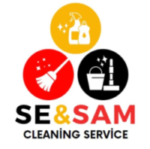Powerful Disinfection
Hydrogen peroxide effectively eliminates bacteria, viruses, fungi, and mold thanks to its oxidizing properties. It’s widely used for disinfecting surfaces such as kitchens, bathrooms, toys, and even medical tools without leaving behind toxic residues. This makes it a safer option compared to many commercial disinfectants.
Natural Whitening
This chemical is ideal for brightening white clothes, removing stubborn organic stains like blood or wine, and restoring dull grout. By breaking down the pigments responsible for discoloration, hydrogen peroxide provides a natural whitening effect without harsh chemicals.
Eco-Friendly and Biodegradable
Unlike bleach, which can produce harmful byproducts, hydrogen peroxide naturally decomposes into water and oxygen. This biodegradability ensures minimal environmental impact, making it an environmentally friendly choice for your cleaning needs.
Versatility
The uses of hydrogen peroxide extend far beyond basic surface cleaning:
- Cleaning burnt ovens and pans : Combine it with baking soda for a powerful scrubbing solution.
- Refreshing carpets and fabrics : Use it to remove odors and stains from carpets and upholstery.
- Deodorizing appliances : Eliminate unpleasant smells from refrigerators or dehumidifiers with its refreshing properties.
Material Safety
Compared to bleach, hydrogen peroxide is less corrosive, allowing safe use on materials like wood, natural stone, and delicate fabrics (when diluted appropriately). However, always test on a small, inconspicuous area first to ensure compatibility.
Disadvantages and Precautions
While hydrogen peroxide offers numerous benefits, there are certain limitations and safety concerns to consider:
Instability and Limited Shelf Life
Hydrogen peroxide decomposes quickly when exposed to light or heat, reducing its effectiveness over time. To maximize shelf life, store it in an opaque, airtight container away from direct sunlight.
Health Risks
- Irritation : Concentrations above 3% can cause skin burns or eye irritation. Always dilute properly before use.
- Toxicity if Ingested : Accidental ingestion may lead to vomiting or internal damage. Keep it out of reach of children and pets.
Material Damage
- Corrodes certain metals, such as copper and silver, due to oxidation.
- Can discolor colored fabrics if not applied carefully.
Limited Effectiveness Against Stubborn Mold
While effective against surface mold, hydrogen peroxide is less capable than bleach at penetrating porous surfaces to eliminate deep-rooted mold infestations.
Incompatibility with Other Products
Never mix hydrogen peroxide with bleach, vinegar, or acids, as this combination can generate toxic gases, such as chlorine. Always read labels and follow instructions carefully.
Practical Safety Tips
- Recommended Concentration : Stick to a 3% solution for most household cleaning tasks.
- Pre-Test : Apply to a small, hidden area to check for discoloration or corrosion before widespread use.
- Protection : Wear gloves and goggles to protect your skin and eyes during application.
- Contact Time : Allow hydrogen peroxide to sit on surfaces for 5–10 minutes for optimal disinfection before rinsing thoroughly.
Comparison with Other Cleaning Agents
Conclusion
Hydrogen peroxide stands out as a valuable tool for eco-conscious cleaning enthusiasts. Its versatility, low toxicity, and biodegradability make it a safe and sustainable alternative to harsh chemicals. While it has some limitations—such as reduced effectiveness against deeply embedded mold—it excels in everyday cleaning tasks. For best results, pair hydrogen peroxide with natural ingredients like baking soda for enhanced performance. When used responsibly, it’s an indispensable addition to any cleaning arsenal.
